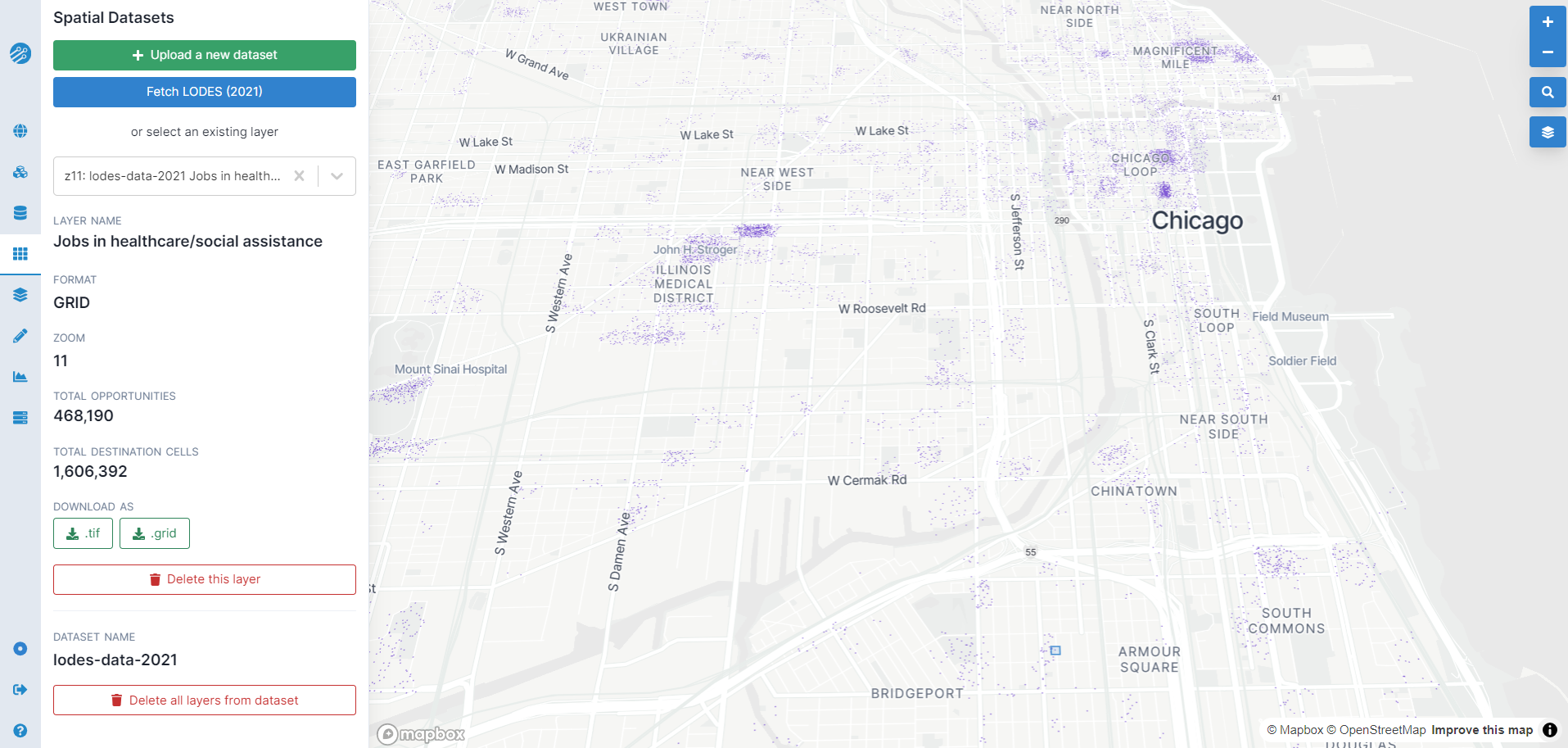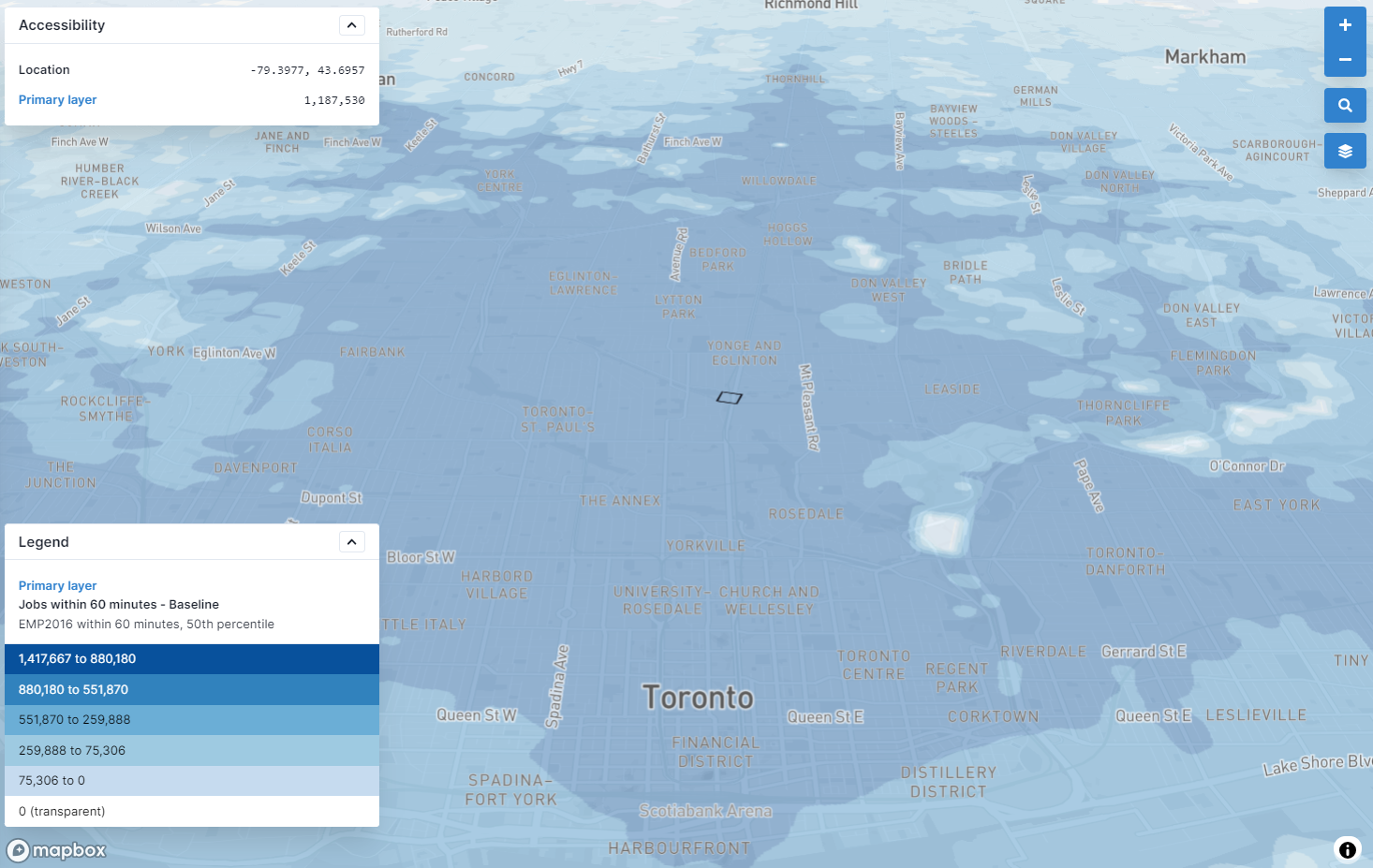We're thrilled to announce these updates, especially a new itinerary viewer for diving into Conveyal's multi-modal routing results! To view detailed transit itineraries, use the recommended routing engine (at least v6.8), pin a destination on the map, fetch results, and click the "View routes to destination" button.


Display a summary of routes to the destination
In the itinerary viewer, the left table shows a minute-by-minute summary of optimal itineraries from your selected origin to destination. Details for each itinerary are on the right, including access/egress time/mode, a range of total door-to-door durations (reflecting different waiting times encountered), the number of times the itinerary was used, and information about each transit leg of the journey (boarding/alighting stops, route, and in-vehicle time).
Additional improvements and bug fixes available with the v6.8 release:
- Improved informational and warning messages returned while running an analysis
- Revised on-street routing to prevent passing certain OSM barrier nodes (such as emergency exits)
- Enabled experimental "generalized cost" routing on additional networks
- Fixed a bug that could set an incorrect bicycle LTS in certain modifications
- Improved file upload



